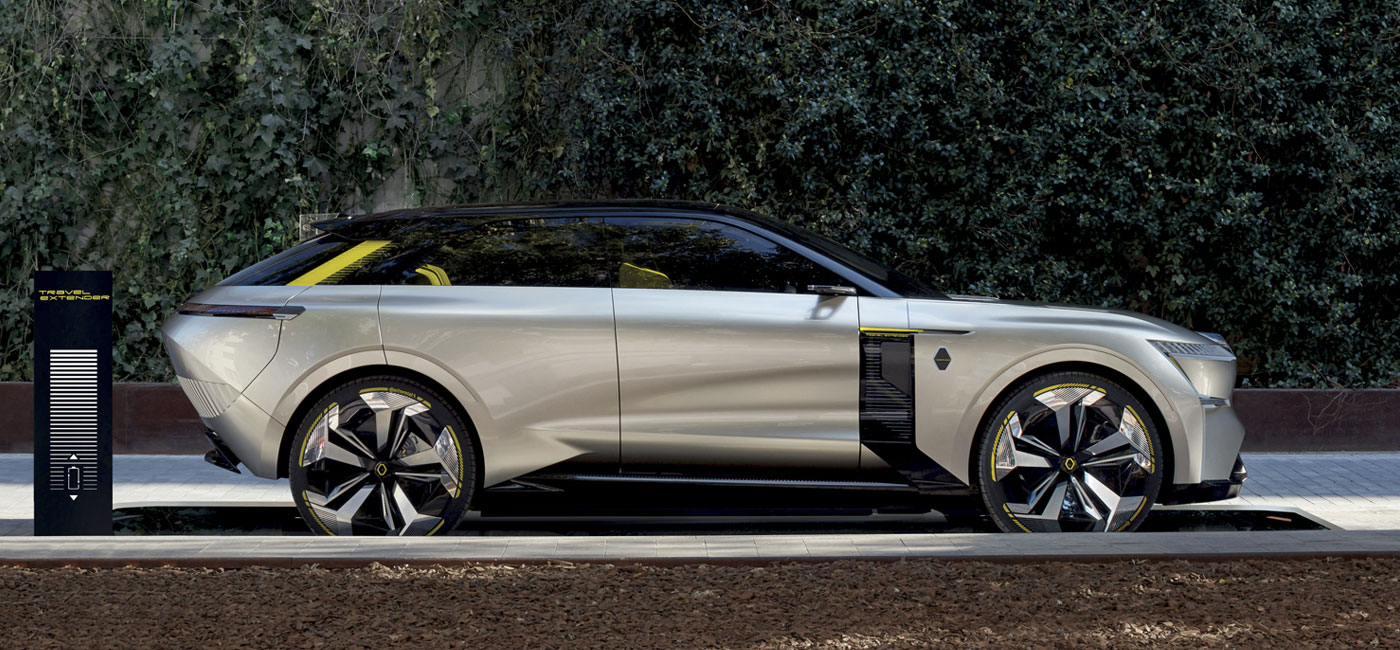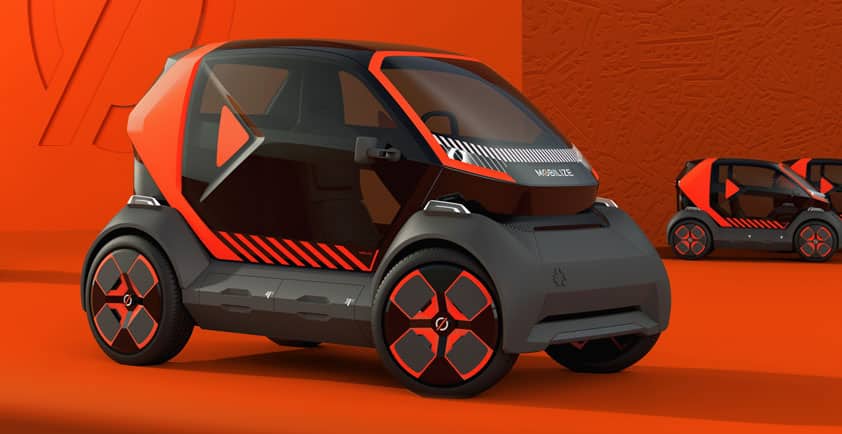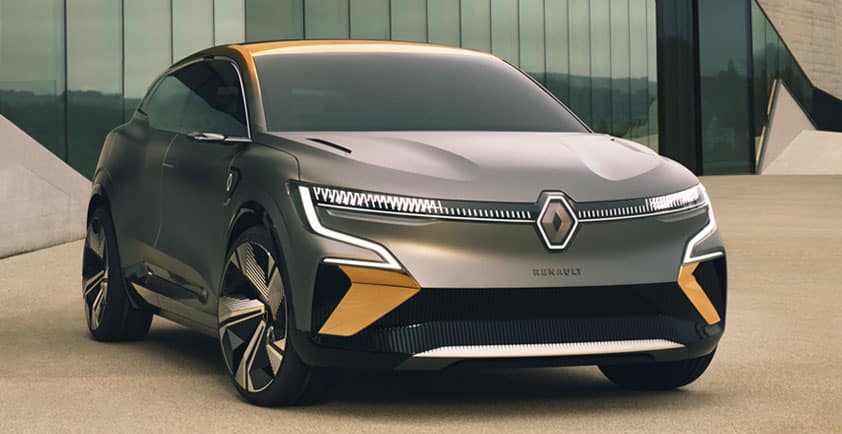

RENAULT UNVEILS ITS MORPHOZ ELECTRIC CONCEPT CAR
Renault unveils its MORPHOZ concept car, illustrating its vision of future electric mobility. This modular vehicle offers a personalized adaptation to the needs, desires and uses of each person to push back all the automotive limits.
>> Renault MORPHOZ is a personal electric vehicle, connected and equipped with level 3 autonomous driving functions. It can be shared when not in use.
>> MORPHOZ is adaptable: it can be transformed to fit to all uses, both those of everyday life, for short journeys and those requiring a longer range.
>> It takes advantage of the Alliance's future CMF-EV modular electric platform to offer several configurations of power, capacity and range, as well as habitability and trunk volume.
>> It prefigures a new family of Renault electric models that will arrive from 2021.
This futuristic vehicle represents Renault’s vision of personal, shareable electric mobility in the years beyond 2025. It’s called the MORPHOZ. And it draws on the Alliance’s new modular CMF-EV electric platform to offer several configurations not only of power, capacity and range, but also of user options and boot space too.
Faithful to the brand’s DNA, the MORPHOZ concept embodies the Family petal of Renault’s ‘Life Flower’ design strategy, which is based around the stages within a person’s life. However, it is not merely an exploratory vision of mobility. In its design, details and interior presentation, it also heralds a new family of Renault electric models for the coming years.
"Bold in its modularity, innovative in its design, human centric through its ability to facilitate sharing and exchange, the MORPHOZ concept perfectly embodies the new LIVINGTECHTM philosophy of Renault’s Design. Technology in all its forms - design, on-board intelligence, connectivity, interior layout - serves a new travel experience for all vehicle users. From the everyday to the weekend and holiday experience. The MORPHOZ concept is a truly living experience."
Laurens van den Acker, EVP, Corporate Design Groupe Renault


MORPHOZ, a personal vehicle that can be tailored to requirements
Renault MORPHOZ is a 100% electric adaptable crossover concept car which charges by induction even as it is being driven. It is connected and equipped with level 3 autonomous driving functions. Like the SYMBIOZ concept that we unveiled in 2017, this is a personal vehicle which now boasts specific sharing functions.
The high adaptability of the MORPHOZ concept-car is demonstrated by the physical transformation that occurs between its two versions: the short “City” one and the long “Travel” one. The vehicle is in fact capable of adapting itself to the way its users live, be it for daily use or, for example, holiday travel.
To achieve this, the City version is fitted with just the right battery capacity to meet day-today requirements, while the Travel version can accommodate the extra capacity needed for long distances on motorways, for example.
City mode - The short City version of the Renault MORPHOZ is 4.40 metres long. At 2.73 metres, its wheelbase is a record for such a vehicle length, so that it can easily house the 40 kWh of batteries that are fitted as standard, while still being light and without unnecessary extra cost. The onboard experience is however worthy of a model in the next segment up.
In this configuration, the MORPHOZ boasts a specific light signature, to give a look that is enhanced by the presence of additional LED segments. Its style is more striking, with its short bonnet, sculptured bumpers and lack of overhang that pushes the wheels out to the corners, in order to symbolise the agility of an electric-powered city vehicle.
Travel mode - The long Travel version of the Renault MORPHOZ is 4.80 metres long. Its wheelbase is proportionately longer at 2.93 metres to allow it to accommodate the additional battery capacity and provide a spacious interior. It can thus carry extra batteries that provide 50 kWh of power (total capacity of 90 kWh) and offer more leg room for the passengers, along with enough space for two more suitcases. In addition, this version - which benefits from a specific light identity - has a specific tapered front-end and profile to optimise its aerodynamic performance optimising it for long distances.


An adaptive passenger compartment for driver and passengers
At the driver’s approach, the Renault MORPHOZ runs a light sequence to show that the driver has been detected and recognised by the vehicle’s sensors. A wave is all that is needed to unlock the vehicle and open its doors. Their reverse-hinged opening combined with the absence of a B-pillar makes it easier for passengers to get into the welcoming passenger compartment, which is illuminated by the yellow of the seat fabric and centre console. Like the bodywork, the passenger compartment can convert to adapt to the requirements of both driver and passengers.
Retractable LIVINGSCREEN panel - The car has a futuristic steering wheel, at the centre of which lies a 10.2-inch screen that displays the main driving and safety information. Behind this steering wheel, there is a surround dashboard that seems to be devoid of a true instrument panel and multimedia screen.
At the request of the driver – who can thus decide to make the screens disappear – this dashboard opens to allow the LIVINGSCREEN instrument panel to fold out smoothly. This single, wide screen displays both the driving and the multimedia system information.
The LIVINGSCREEN panel can be deployed in manual driving mode or autonomous mode.


Swivelling passenger seat - The passenger compartment on the MORPHOZ has a “Share” mode that allows the passengers – but not the driver, who always faces the road – to sit face-to-face to converse or participate in a shared activity.
To achieve this, the totally symmetric front passenger seat swivels round completely to face the rear. The passengers can then make use of the cross-compartment centre console and its vast screen to act as though they were at home in the living room.
Sliding rear seats - When the MORPHOZ switches from City to Travel mode, the rear passenger seats automatically move backwards to take advantage of the extra space inside.
The passengers then have more leg room. It’s also easier for them to behave as if they were sitting in armchairs around a table, where the screen on the cross-compartment centre console serves as a table.
Level 3 autonomous driving
The Renault MORPHOZ concept provides level 3 autonomous driving, as defined by the SAE International organisation. Also known as “Eyes off - Hands off”, this level allows the driver to let go of the steering wheel and delegate the driving to the vehicle in certain defined situations on authorised roads, such as on a motorway or in traffic jams.
The vehicle can handle the distance from the vehicle in front, staying in lane even on bends, and moving in traffic jams. However, the driver must be able to take back control very quickly (a few seconds) upon request of the system. It may occur in bad weather conditions or in the absence of road markings, for example. Therefore, the MORPHOZ’s steering wheel always remains in place, even when the large instrument panel screen has retracted into the dashboard.
With level 3 autonomous driving, the driver is free to move their eyes and hands once delegation has been made. He can use the car's multimedia system to dictate e-mails, text messages or play multimedia content, for example.
At present, Renault offers the Highway and Traffic Jam Companion on its most recent vehicles (Clio, All-new Captur, New Espace, New Mégane & New Talisman). This combines with adaptive cruise control (with Stop & Go) and lane centring to provide level 2 autonomy. By the end of 2020, Renault will offer the Highway and Traffic Jam Companion on 16 different vehicle configurations in Europe, Korea and China.
When permitted by regulations and the technological developments allow level 3 to be widely used, Renault models will be fitted with level 3 autonomous technology. Meanwhile, driving aids such as the Highway and Traffic Jam Companion will be enhanced, with the addition of connectivity to other vehicles and to the infrastructures.


Connectivity and artificial intelligence help interactions between passengers
On board the Renault MORPHOZ, the driver and passengers enjoy a welcoming, spacious LIVINGSPACE compartment. Comfortably settled in fully individual seats, they are looked after by an AI which uses connectivity to meet their needs, desires and inclinations. The aim is to maximise the number of personal interactions to foster a sense of calm and well-being.
> Welcome on board - The artificial intelligence also operates on the outside of the vehicle, using its sensors to detect and recognise the driver on approach. It activates a light sequence on the doors to denote recognition. The driver just waves to activate the welcome sequence, which unlocks and opens the doors, automatically positions the seat and adjusts the interior lighting to the driver’s preferences and mood. The driver also hears the AI’s welcoming voice.
> The backbone - The passenger compartment of the Renault MORPHOZ concept is crossed by a raised centre console which represents the brain of the AI. There is a special holder for the driver’s smartphone, which is then “drawn” into the console’s wooden panel to serve as the AI’s main data source. The AI will then, if authorised, use data and information from the smartphone to perform its tasks.
> Display - The AI lets the driver see the surrounding area by processing real-time data from external sensors and images from the vehicle cameras, particularly those replacing the door mirrors. Light displays on the inner doors and windows signal the presence of a pedestrian, for example, or a cyclist in the blind spot.


A proactive virtual personal assistant
> Three call modes - Acting like a virtual personal assistant, the artificial intelligence on the Renault MORPHOZ concept can be called up and managed in three ways: by touching the screens or console, by hand gestures or by voice.
> Planning - In City mode, for daily travel, the AI converts the driver’s diary into an efficient trip by optimising the itinerary and the time between two appointments or meetings. In Travel mode, en route to a holiday, for example, it suggests points of interest whilst taking the desired time of arrival and the remaining range into account, like the electric journey plan on the MY Renault app for Renault electric vehicles. In both cases, the large screen on the instrument panel provides a 3D display of the trip.
> Continuity - Onboard the MORPHOZ, the driver and passengers don’t need to lose touch with their digital lives. Smartphones are detected automatically, and each person can then carry on listening to their favourite music relayed through the speakers in the seats. A journey planned at home will be automatically picked up by the navigation system, which will then send a route of the last distance to be walked to the driver’s smartphone once the vehicle is parked close to its destination.
A creator of friendships and exchanges
> Authorisation - Although the AI in the Renault MORPHOZ concept will automatically detect devices for each passenger, such as any smartphone that it can search for data, it will be unable to use such data without authorisation. The privacy of any friend who gets in or of any person who uses the vehicle’s sharing functions is thus automatically maintained.
> Shared screen - The social role of the artificial intelligence on board the Renault MORPHOZ concept is evidenced by the shared screen located between the seats on the centre console. This is where, for example, passengers can scroll through the music library on one of their smartphones, or where they can play video games against each other. This screen also lets the users control the comfort of the passenger compartment via the MULTI SENSE settings.
> Suggestions - The artificial intelligence doesn’t wait for the passengers to act before making suggestions. It will, for example, offer a trip playlist to suit the mood and preferences of each occupant. It adapts to the situation using practical information (the diary of each person, for example) and detects opportunities in accordance with preferences and tastes.













